
The Port of Los Angeles is a seaport managed by the Los Angeles Harbor Department, a unit of the City of Los Angeles. It occupies 7,500 acres (3,000 ha) of land and water with 43 miles (69 km) of waterfront and adjoins the separate Port of Long Beach. Promoted as "America's Port", the port is located in San Pedro Bay in the San Pedro and Wilmington neighborhoods of Los Angeles, approximately 20 miles (32 km) south of downtown.

From its modern interpretations to its antecedents when maritime nations would send young naval officer candidates to sea, sail training provides an unconventional and effective way of building many useful skills on and off the water.

The Mariners' Museum and Park is located in Newport News, Virginia, United States. Designated as America’s National Maritime Museum by Congress, it is one of the largest maritime museums in North America. The Mariners' Museum Library, contains the largest maritime history collection in the Western Hemisphere.

The twin brigantines Irving Johnson and Exy Johnson are the flagships of the Los Angeles Maritime Institute's (LAMI) TopSail Youth Program, a non-profit organization that helps at-risk youth learn discipline and teamwork through sailing. They join LAMI's topsail schooners the Swift of Ipswich and the Bill of Rights. The boats are named for sail training pioneers Irving and Electa "Exy" Johnson.
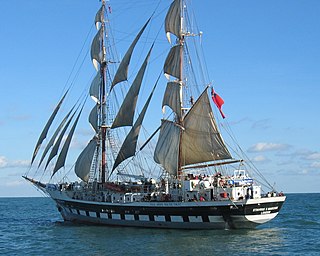
Tall Ships Youth Trust (TSYT) is a sail training organisation in the United Kingdom that currently owns and operates four 72ft Challenger yachts and a 55ft ketch.

American Pride is a three-masted schooner built in 1941 by Muller Boatworks in Brooklyn, New York. It was administrated by the Children's Maritime Foundation (CMF), her home port is Long Beach, California. She is easily recognized by her bright ochre sails.

A maritime pilot, marine pilot, harbor pilot, port pilot, ship pilot, or simply pilot, is a mariner who has specific knowledge of an often dangerous or congested waterway, such as harbors or river mouths. Maritime pilots know local details such as depth, currents, and hazards. They board and temporarily join the crew to safely guide the ship's passage, so they must also have expertise in handling ships of all types and sizes. Obtaining the title "maritime pilot" requires being licensed or authorised by a recognised pilotage authority.

The Diosa del Mar was a wooden schooner that sank off of the coast of Catalina Island at 2:25 pm on July 30, 1990.

Te Vega is a two-masted, gaff-rigged auxiliary schooner. Originally launched as the Etak, she was designed by New York naval architects Cox & Stevens in 1929 for American businessman Walter Graeme Ladd and his wife, Catherine ("Kate") Everit Macy Ladd. Etak was built at the Friedrich Krupp Germaniawerft shipyard in Kiel, Germany, and launched in 1930. During World War II she served the US Navy as Juniata (IX-77). She is among the largest steel-hulled schooners afloat.
Spirit of South Carolina is a "tall ship" built and home ported in Charleston, South Carolina. She was owned and operated by Tommy Baker and Michael Bennett till March 2016, when they donated it to the "Spirit of South Carolina Inc" a 501(c)(3) not for profit foundation. The Spirit of South Carolina is a certificated Sail Training Vessel, providing experiential education programs for the youth of South Carolina. Interdisciplinary programs focus on math, science, history and literature of South Carolina, and our relationship to the water.
Charles Drown Mower (1875-1942) of New York was a noted yacht designer and author, and was at one time design editor of the Rudder magazine and a contributing author to Motor Boating magazine.
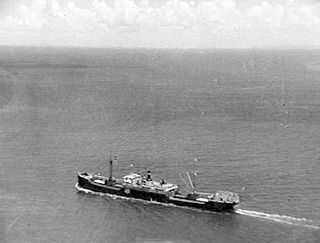
MS West Honaker was a diesel-powered cargo ship of the United States Maritime Commission (USMC) that was part of the "Corncob Fleet" of old ships sunk as part of the "gooseberry" breakwater off Utah Beach during the Normandy invasion. The ship was originally built as SS West Honaker, a steam-powered cargo ship built for the United States Shipping Board (USSB), a predecessor of the USMC. At the time of her completion in 1920, the ship was inspected by the United States Navy for possible use as USS West Honaker (ID-4455) but was neither taken into the Navy nor ever commissioned under that name.
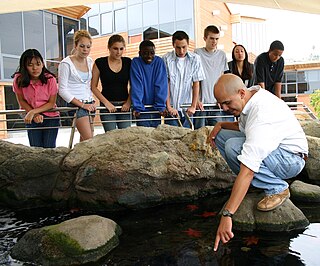
The Ocean Institute is an ocean education organization located in Dana Point, California. Founded as the Orange County Marine Institute in 1977, it offers ocean science and maritime history programs for K–12 students and their teachers. Over 100,000 students and 8,000 teachers from Orange County and the surrounding counties participate yearly in immersion-style programs in the institute's oceanfront labs and abroad.

USS West Haven (ID-2159) was a steel–hulled freighter that served the United States Navy in World War I, and later servedin convoys in the Battle of the Atlantic in World War II.
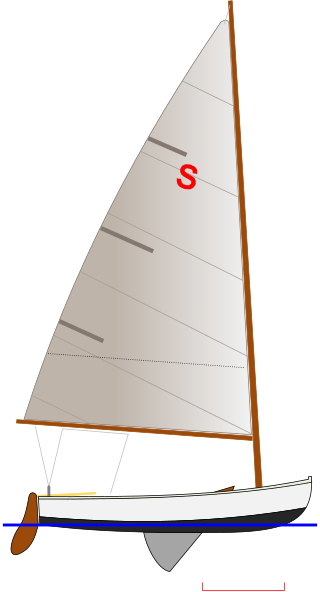
The Snowbird is an American sailboat that was initially designed by Willis Reid as a one design racer and first built in 1921. The boat was re-designed by Edson B. Schock in the 1940s and it became a popular junior class.

Channel Islands Harbor is a small craft harbor and shore-protection project in Oxnard, California at the southern end of the Santa Barbara Channel. It is the fifth largest harbor for small-craft recreation in the state of California and is a waterfront resort, recreation, and dining marketplace. Recreational activities include diving, boat charters, sea kayaking, sportfishing, and whale watching.
JADA is a sailing yacht that was originally commissioned by Delbert Axelson of Axelson Manufacturing. Axelson had the yacht built for his son, Jack Axelson, as a college graduation present. JADA is less a name and more of an acronym, being the first letters of the names Jack, Alta, and Delbert Axelson. Delbert, a member of Newport Harbor Yacht Club had JADA built at Stephens Brothers Boat Yard in Stockton, CA in 1938. JADA was launched on June 5 of that year. Before becoming and currently serving as a charter boat, JADA was actively raced and sailed up and down the west coast from Santa Barbara to Ensenada, Mexico, and to Hawaii and back.
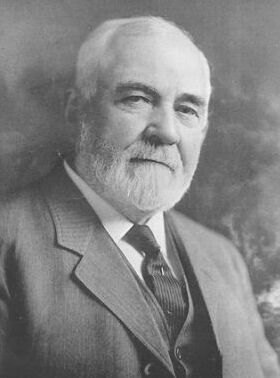
Craig Shipbuilding was a shipbuilding company in Long Beach, California. To support the World War I demand for ships Craig Shipbuilding shipyard switched over to military construction and built: US Navy Submarines and Cargo Ships. Craig Shipbuilding was started in 1906 by John F. Craig. John F. Craig had worked in Toledo, Ohio with his father, John Craig (1838-1934), and Blythe Craig, both shipbuilders, their first ship was built in 1864 at Craig Shipbuilding Toledo. John F. Craig opened his shipbuilding company in Port of Long Beach on the south side of Channel 3, the current location of Pier 41 in the inner harbor, becoming the port's first shipyard. In 1908 Craig Shipbuilding was given the contract to finishing dredging of the Port of Long Beach inner harbor and to dredge the channel connecting it to the Pacific ocean. In 1917 Craig sold the shipyard to the short-lived California Shipbuilding Company. but then opened a new shipyard next to the one he just sold and called it the Long Beach Shipbuilding Company. The Long Beach Shipbuilding Company built cargo ships in 1918, 1919, and 1920 for the United States Shipping Board.

The Harvey Gamage is a 131' gaff rigged schooner launched in 1973 from the Harvey F. Gamage Shipyard in South Bristol, Maine. She was designed by McCurdy & Rhodes, Naval Architects in Cold Spring Harbor, New York and Frederick W. Bates of Damariscotta, Maine. She is a USCG inspected vessel both as a passenger vessel and a sail training vessel. As governments of maritime countries recognise Sail Training as an essential component of developing and maintaining an essential merchant marine force, the US Congress created a special service category of vessel for Sail Training and the Harvey Gamage is one of a handful of vessels licensed for this service. She has been educating students at sea along the east coast of North American almost continuously since her launch. She has 14 staterooms accommodating 39 people, including 9 professional crew, 22 youth sail trainees and up to 4 adult chaperones. As a training vessel, she takes crews of students along the eastern seaboard, from her home port in Maine to various destinations ranging from The Maritimes to the Caribbean
















